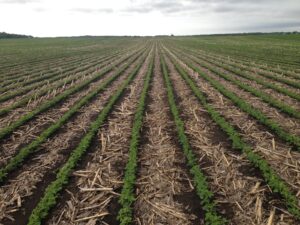Four Years of Tillage Research: Key Takeaways
 Understanding the Impact of Tillage Practices
Understanding the Impact of Tillage Practices
Tillage has long been an essential aspect of agriculture, playing a role in warming the soil, controlling weeds, and incorporating fertilizers. However, excessive tillage can degrade soil health by breaking apart soil aggregates, leading to erosion, crusting, and a reduction in organic matter. Over the past century, advancements in tillage tools have allowed for a more precise approach, balancing soil health with effective crop production.
Multi-State Tillage Research Initiative
To better understand how different tillage systems impact soil temperature, moisture, and crop yield, a multi-state research project was conducted by University of Minnesota Extension, North Dakota State University, and agricultural commodity groups. The study focused on the Red River Valley and included four tillage systems:
- Chisel plow
- Vertical tillage
- Strip till with shank
- Strip till with coulters
The study spanned four years across multiple farm locations in Minnesota and North Dakota, utilizing full-scale farming equipment to ensure real-world applicability.
Key Findings: Soil Moisture and Temperature
Research showed that chisel plow and strip-till berms consistently had the warmest and driest soil conditions in spring and early summer. Vertical tillage followed closely, while no-till retained the most moisture and had the coolest soil temperatures. The impact of these differences was most pronounced on sandy soils, moderate on loamy soils, and minimal on clayey soils.
Crop Growth and Yield Outcomes
Despite variations in soil moisture and temperature, soybean plant populations, growth, and yields remained largely unaffected across all tillage systems. However, at one sandy soil location, both strip-till methods (shanks and coulters) outperformed chisel plowing and vertical tillage by 3.7 bushels per acre. Corn yield differences were inconsistent, with variations largely tied to timely fertilizer application and field conditions rather than tillage method alone.
The Future of Strip-Till and Reduced Tillage
This research reinforces the potential for reduced tillage methods to support sustainable farming while maintaining yields. Farmers can adopt strip-till or conservation tillage strategies to reduce erosion, improve soil health, and maintain productivity without compromising economic viability.
For more insights, you can read the original study here.
This research was supported in part by Minnesota farm families and their corn and soybean check-off investment.

